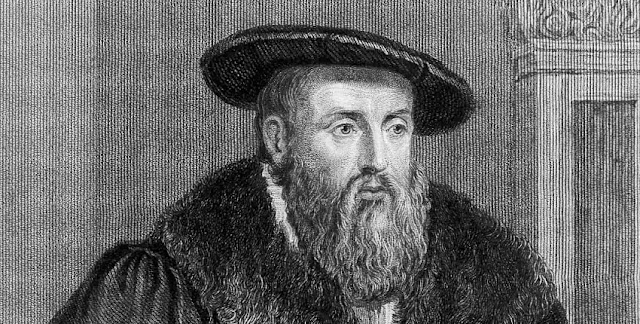Johannes Kepler
Johannes Kepler was a German Lutheran astronomer who made the laws of planetary motion. This astronomer also made important changes with the improvement of the telescope world by laying the foundations of Newtonian physics .
Born near Stuttgart, Germany in 1571. Johannes and his two older brothers and sisters were raised by their mother, when their father left home to fight as mercenaries. Johannes was born prematurely and was sickly as a child. But he lived a full life, married twice and fathered six children and lived until 1630.
Johannes had a love for astronomy from an early age and studied philosophy and theology at the University of Tubingen. Kepler learned about the Copernican system of the heliocentric motion of the planets around the sun and became an adherent of it. After completing his studies, he continued his education at the University of Graz, Austria's second oldest university, for mathematics and astronomy.
Kepler married a widow, Barbara Muller, with whom he had three children. Published his first book, The Cosmographic Mystery in 1596. In this book, Kepler provides the first published defense of Copernicus' theory that was originally published by Copernicus half a century earlier.
Kepler makes good expositions from both an astronomical and theological perspective. In 1600, Kepler's views on Copernicus' theory led him to religious strife at the University of Graz, and when he refused to convert to Catholicism, he contacted Tycho Brahe, a Danish-born astronomer based in Prague, as the center or capital of Bohemia. Brahe was impressed by Kepler's astronomical and mathematical acumen and warranted a move to Prague. When Brahe died unexpectedly in 1601, Kepler took over his job as imperial mathematician to Emperor Rudolph II , who was King of Bohemia, as well as Holy Roman Emperor.

Kepler lived and worked productively in Prague for 12 years. He wrote an important treatise on optics (The Optical Part of Astronomy) in which he explained the physics of human vision and he developed the principles of parallax for astronomy. Parallax is the difference in position of an object viewed along two different lines of sight, and is an important tool used by astronomers in calculating distances to celestial bodies. Kepler observed and described a new bright night star (supernova) that appeared in 1604.
He also wrote ' A New Astronomy ', which explains the laws of planetary motion, including the elliptical orbits of planets around the sun. When Kepler received a copy of Galileo's 1610 book, 'Starry Messenger', he supported Galileo's work and began improving the telescope Galileo described. Kepler succeeded in producing telescopes with greater magnification and improvements in telescope technology ushered in a new wave of astronomical discoveries.
Johannes Kepler Brings New Astronomy

In 1612, the generous Emperor Rudolph II Kepler, and, tragically, his six-year-old son and wife also died. Kepler remained the imperial mathematician for Rudolph's successor, but Kepler moved to Linz, Germany, remarried a twenty-four year old woman, and had three more children. While at Linz, Kepler published a three-volume book entitled 'The Epistome of Copernican Astronomy' in which he explained his three laws of planetary motion:
- The orbit of each planet is an ellipse with the Sun at one of its two foci
- The line connecting the planet and the sun sweeps out equal areas in equal time intervals
- The square of the orbital period of a planet is proportional to the cube of the semi-major axis of its orbit

Kepler's mother, who was a shaman. This woman was accused of witchcraft and tried as a witch, and she helped represent her in court. Kepler's mother was eventually found not guilty. Kepler was able to continue his work after study and practice, publishing the book 'Harmony of the World' in 1619. This book attempted to explain proportion in nature, and he connected proportion with music. The religious tensions that resulted in the bloody Thirty Years' War (1618-1648) forced Kepler to move from Linz in 1626 to Ulm and then to Regensburg where he died in 1630.
Johannes Kepler wrote his own tombstone which is as follows:
I measured the sky, now my image of measuring
Skybound is the mind, grounded the body at rest.

Johannes Kepler has been commemorated in various ways, with schools, universities, buildings, mountains and even Mars' moon and craters named after him. One of the most apt relics is the Kepler Mission launched in 2009 by NASA to search for Earth-like planets. This month, the Kepler space photometer discovered an Earth-like planet called Kepler-186f orbiting a red dwarf star.
Sources:
- https://www.e-rara.ch/doi/10.3931/e-rara-445
- http://www.uff.br/cdme/kepler/kepler-html/kepler-en.html
- https://sekarangsayatahu.com/johannes-kepler/

Comments
Post a Comment